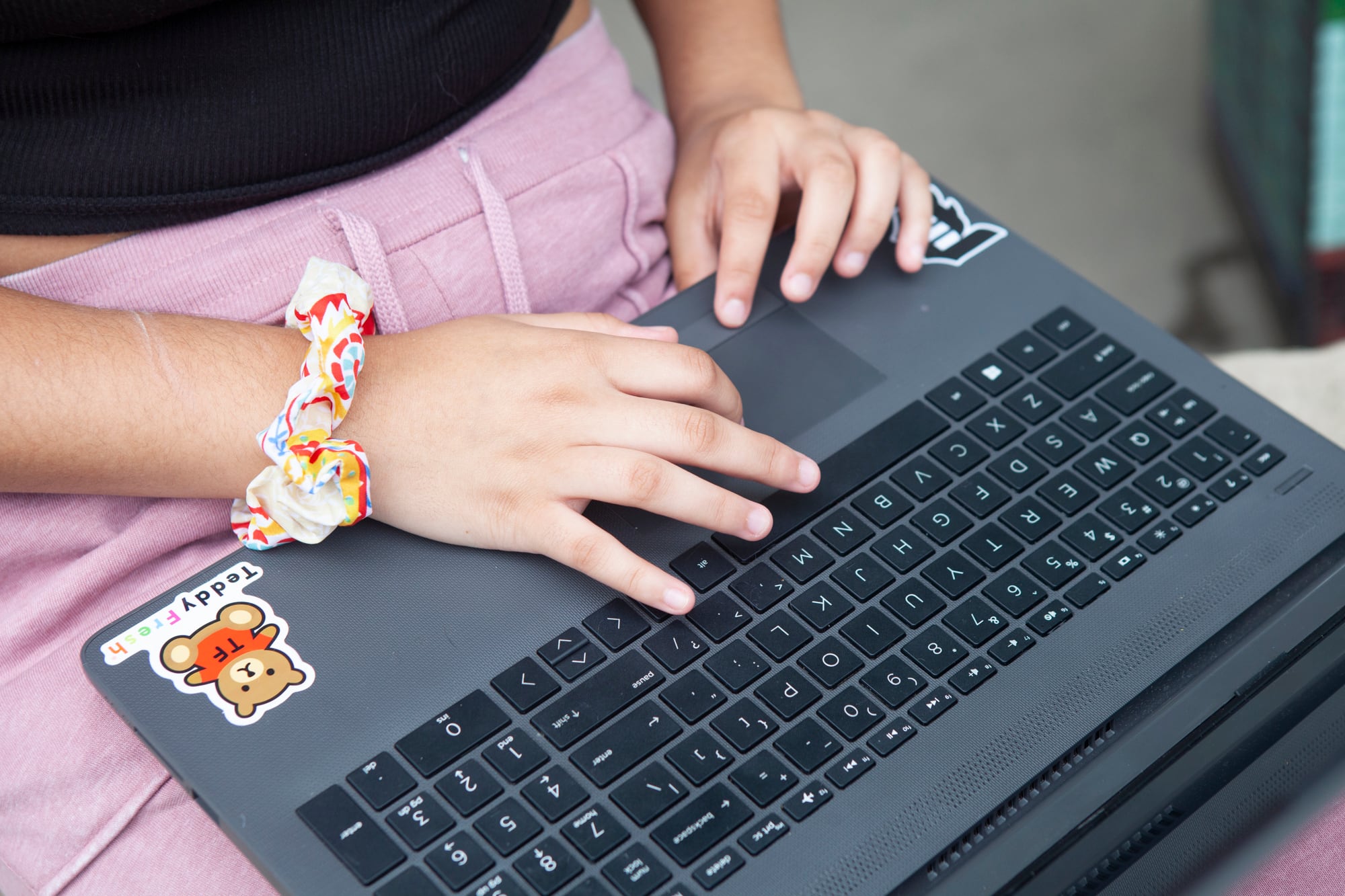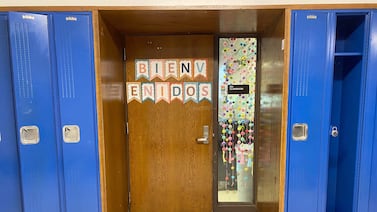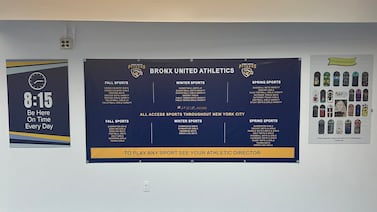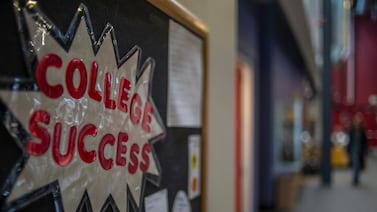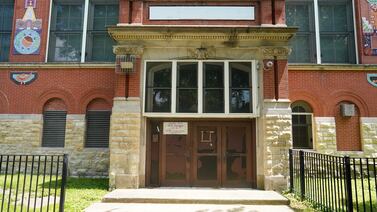A year into a pandemic that has forced more than 350,000 Hoosier students to learn remotely, Indiana House lawmakers have proposed full funding for schools that provide virtual education — including online-only schools that have long received lower allocations.
Nearly 18,000 students now attend dedicated virtual schools — a 65% jump from last school year. That figure is dwarfed by the number of children in brick-and-mortar schools who are now learning virtually due to the pandemic.
The proposal to inject more money into virtual education, part of the draft budget released by the House Republicans last week, is a victory for advocates of online-only schools who say growing awareness is helping them win support for full funding. Indiana has long funded virtual schools at a lower rate than in-person schools based on the theory that online education is less costly than traditional instruction.
Just two years ago, lawmakers cut virtual funding even further because of years of low performance. The schools now receive 85% of the per-student allotment that the state provides for in-person instruction.
But as the coronavirus upended education in Indiana, hundreds of thousands of families experienced their first virtual instruction. Schools that once shunned online education have been forced to embrace it.
“A lot of people had misconceptions about online,” said Jeff Kwitowski, senior vice president of public affairs at Stride, a for-profit virtual school operator that used to be called K12. “There are a lot of folks who just didn’t realize what it really takes — all of the support that it takes.”
Amid fears that schools that usually operate in person would face a precipitous loss in funding, the state Board of Education intervened to provide the full allocation for students who were learning remotely in the fall because of the coronavirus.
A plan to extend that policy to spring has won wide support from many Indiana lawmakers.
That decision opened the door for online-only schools to seek more money, and they are winning some powerful allies.
In a briefing before the draft budget was released, House Speaker Todd Huston said that while he has previously supported full funding for virtual schools, the pandemic now has led some skeptical lawmakers to see the light.
Rep. Ed Delaney, D-Indianapolis, a critic of virtual schools, framed it differently: “They’re trying to take advantage of the circumstances.”
The state should not increase funding because it still does not know how much it costs to educate students in virtual schools, Delaney argued.
That sentiment was echoed by some Republican lawmakers in the state Senate.
“I’m in favor, at this point in time, to leave everything exactly the way it is until we learn what’s best for students,” Sen. Jeff Raatz, who chairs the Senate Committee on Education and Career Development, told Chalkbeat before the House budget was released.
In a committee hearing last month, Senate Appropriations Chairman Ryan Mishler raised concerns about providing full funding for students who are virtual due to COVID-19 because he believes it would be a mistake to encourage students to learn remotely.
Virtual schools have a troubled history in Indiana. The state’s first online school closed due to chronic poor performance. A study released last year found that students fell further behind after transferring to virtual charter schools.
The problems go beyond academic results.
Last year, two defunct virtual schools were accused of misspending more than $85 million in state funding. And last month, auditors alleged another virtual school owes the state more than $300,000 because it inaccurately described its program as operating more than 50% in-person — a model that would entitle it to full state funding.
Proponents of virtual education say that those problems are isolated. They also argue that cutting funding because of poor academic performance makes little sense.
“You don’t improve performance with fewer resources. It’s just counterintuitive,” said Elizabeth Sliger, head of school for Indiana Digital Learning School, which is run by Stride.
Pointing to a jump in the high school graduation rate last year, Sliger said the school is improving. But low state funding ties her hands, she argued.
Because virtual schools get less state funding than brick-and-mortar campuses, they have less money to support students who are behind, Sliger said. “Virtual doesn’t mean easy or cheap.”
The pandemic has helped fuel rapid expansion at Indiana Digital Learning School, which now enrolls 6,000 students.
Sherri Shell, whose daughter is in first grade, plans to keep her in Indiana Digital Learning School even after the coronavirus numbers improve.
Her daughter, who has autism, struggled at her first school and was eventually sent to a special needs school, where she was unhappy.
At Indiana Digital Learning School, Shell said, her daughter is doing better. She likes her teacher and she can take breaks when she is frustrated.
Shell said she would like her daughter to have more live instruction. “They could do a lot more if they had the full funding that brick-and-mortar schools do,” Shell said.
While online schools save money because they don’t have to pay for such expenses as transportation and building maintenance, these costs are typically covered by property taxes at traditional public schools.
State funding is supposed to support the cost of instruction, and it should be the same for online instruction, virtual school supporters say.
But skeptics of virtual education say that there can be other cost savings at virtual programs, including the need for significantly fewer teachers.
Students in virtual schools often work independently for much of the day, doing assignments and watching videos without a live teacher. Virtual schools also rely on parents to supervise their children, especially in early grades.
Indiana Digital Learning School has about 28 students per teacher, officials said. Statewide, public schools have an average of 17 students per teacher, according to the National Center for Education Statistics.
“There’s no question that with more money they could afford more teaching,” said Delaney, a Democrat on the House Education Committee. “The question is, would they deliver it?”
When the school year started, Amy Thornburg chose the virtual option the district offered. But there was no live instruction or support from a dedicated teacher. Thornburg pulled her two children out. She enrolled one daughter in a charter school for students with autism and the other in Indiana Digital Learning School.
Her third grader only spends about an hour a day in a live video class with a teacher at Indiana Digital Learning School. The rest of the day she works independently.
The schedule works for their family, Thornburg said, because she is working from home during the pandemic and her daughter is tech-savvy and interested in school.
Overseeing virtual school is an exhausting, time-consuming responsibility, said Thornburg, a nonprofit management consultant. But she said she likes being involved in her daughter’s education, and her daughter enjoys the flexibility.
“I will say my local school has more competition now than I ever thought that they would,” Thornburg said. “This is a viable option for my daughter now.”


